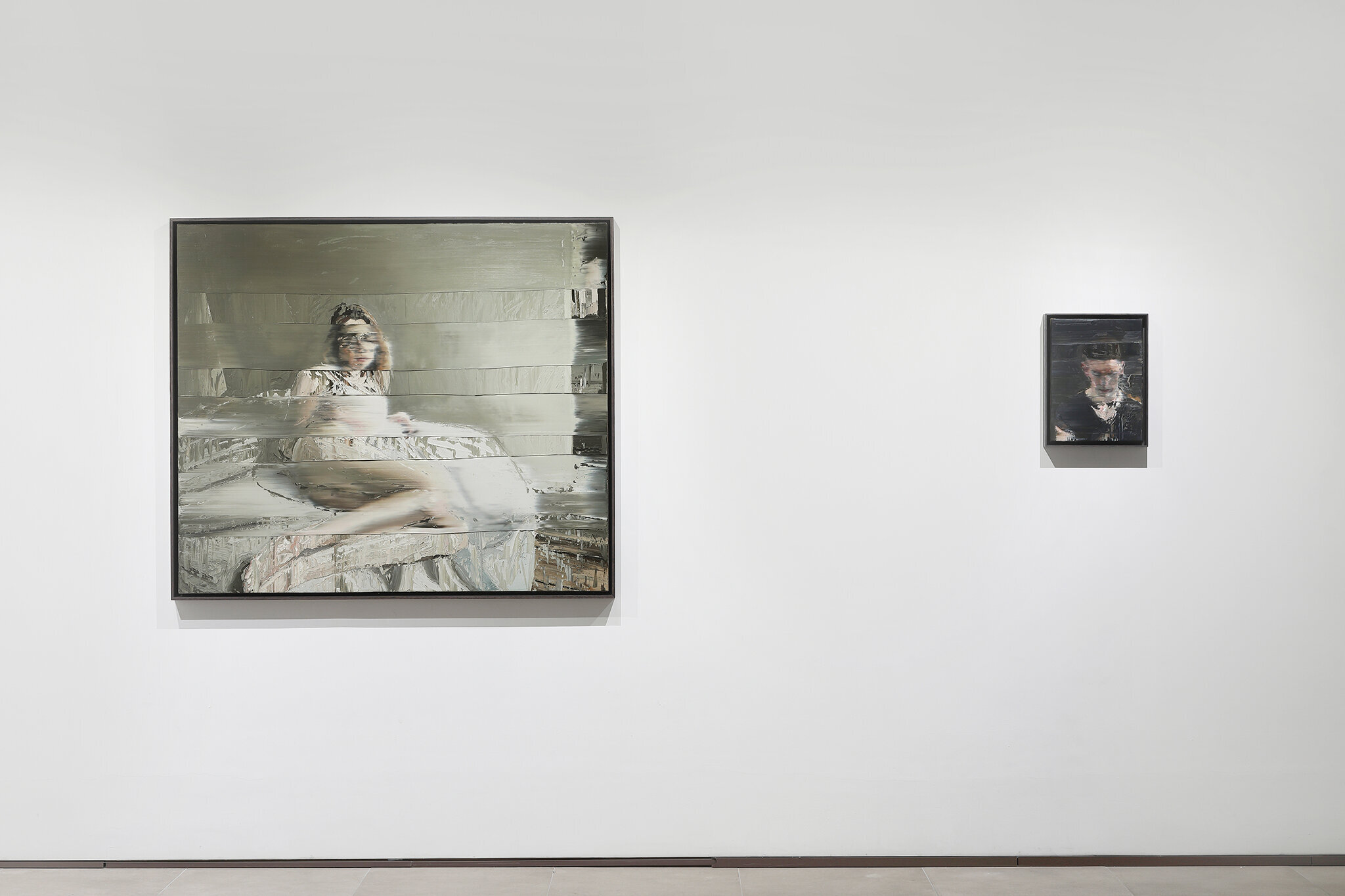Solo Exhibition, Opera Gallery, Seoul
Paintings of Disruption | 8. November - 30. November 2019
After all, an aesthetic experience is more often found in wounds, cracks, protuberances, and creasesthan in sleekness. In other words, invasion, trauma, and contradictory movement are essential to art. According to Martin Heidegger, Artlanguage (image) originates from the act of puncturing and penetrating — or, ‘making something visible’ by opening a gap. Denzler’s studio practice is quite close to this definition of art. He literally breaks into the surface of the painting, then pushes paint around to summon sleekness on his canvas. He carves out layers of paint as if he is making a woodcut, or builds thick coats of paint on top. Eventually, his entire painting is turned into a gap, an opening that leads to somewhere else. Numerous three-dimensional collisions are overlaid on the sleek photographic image, covering the canvas like a thin veil. As the thick paint and crude brushstrokes gradually rise to the surface, the images ebb away like lifting a veil.
Park Kyum-Sook, National Museum of Modern and Contemporary Art, Seoul


